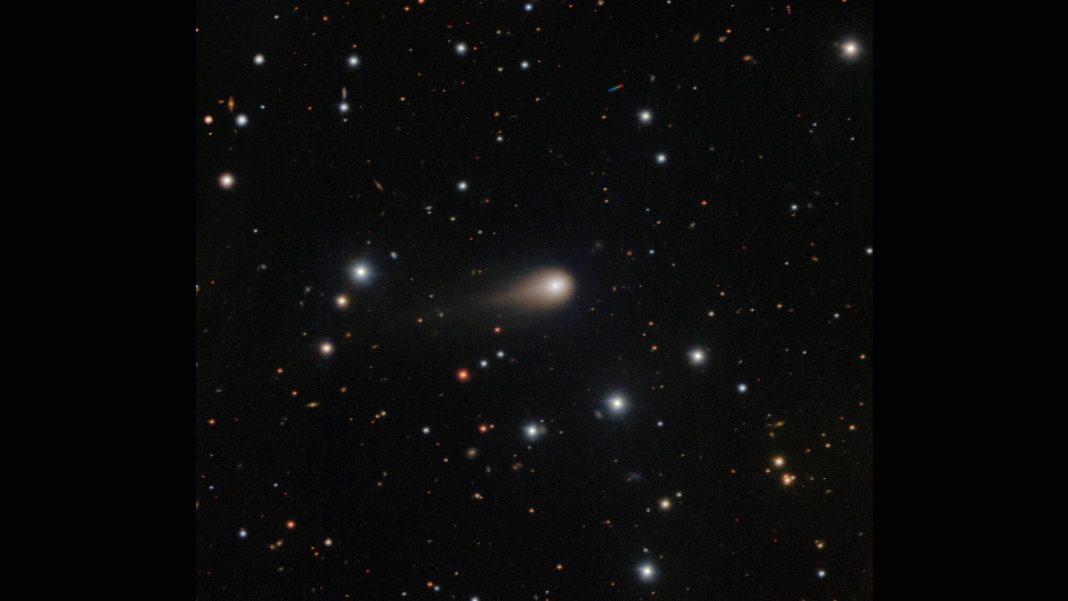The universe is a master illusionist, and sometimes, even our best eyes can be tricked. Such was the case recently with interstellar comet 3I/ATLAS, which made headlines for seemingly pulling off a cosmic costume change. Whispers and reports suggested this enigmatic visitor from another star system had dramatically shifted its hue, perhaps from a vibrant green to a dusty red. But hold your telescopes! According to the scientists who spend their nights unraveling these celestial mysteries, 3I/ATLAS hasn’t actually ‘changed color’ at all. It’s a fascinating tale of perception, instrumentation, and the complex beauty of cometary science.
The Cosmic Chameleon That Wasn’t
For a brief moment, the idea of an interstellar comet morphing its appearance captivated space enthusiasts and casual observers alike. 3I/ATLAS, a relatively new discovery that traversed our solar system from beyond, initially presented itself with a distinct greenish glow around its coma – the fuzzy atmosphere surrounding its nucleus. This green hue is common in many comets and is attributed to diatomic carbon (C2) molecules, which fluoresce when exposed to sunlight. Later, some observations depicted a more reddish or orange tint, especially in its tail, leading to the intriguing notion that the comet had undergone a significant transformation. Was it shedding layers? Reacting to our Sun differently? The truth, as it often is in science, is far more nuanced than a simple color flip.
Decoding the Dust: What Scientists Really See
The explanation for the perceived “color change” lies not with the comet itself evolving its pigments, but with the sophisticated methods scientists use to study it. Unlike a snapshot from your phone camera, astronomical images are often composites of data captured through various filters, each sensitive to different wavelengths of light or different chemical signatures. When observing comets, astronomers might use spectrographs to analyze the specific elements and molecules present, or they might employ filters designed to highlight specific emissions – like that green glow from C2, or the dust reflected light that tends towards redder wavelengths.
“It’s really about what we’re choosing to look at and how our instruments are designed to see it,” explains a planetary scientist involved in comet observations. “Different telescopic setups or different spectral filters will emphasize different components of the comet. If one observation highlights the gas in the coma, you might see more green. If another focuses on the dust grains scattering sunlight, especially as they get further from the nucleus, you’ll pick up more of the red and orange hues. It’s not a literal color change on the comet’s part, but a shift in the scientific information being presented.” Essentially, we’re not seeing a chameleon, but rather a multi-faceted gem being illuminated from different angles, revealing different facets of its true nature. These ‘false color’ images are invaluable tools for understanding composition, even if they can sometimes lead to public misinterpretations about an object’s visual appearance.
Beyond the Hype: Understanding Interstellar Visitors
While the ‘color change’ story might have been a misunderstanding, it doesn’t diminish the incredible significance of 3I/ATLAS. As only the second confirmed interstellar object to be observed in our solar system (after ‘Oumuamua), it represents a unique opportunity to study material from beyond our own cosmic neighborhood. Each observation, regardless of the ‘color’ it emphasizes, adds to our understanding of the diverse chemical makeup of other star systems and the processes that shape comets and asteroids far, far away. Scientists are painstakingly analyzing every bit of data to uncover clues about its origin, its journey, and what it can tell us about planetary formation in a different stellar nursery. So, while 3I/ATLAS hasn’t been redecorating itself, it continues to be a vibrant source of scientific discovery, challenging our perceptions and expanding our cosmic horizons.
The next time you hear about a dramatic shift in a celestial body, remember the unseen filters and the scientific interpretations at play. The universe is always full of surprises, but sometimes, the biggest revelations come from understanding how we look at them.




